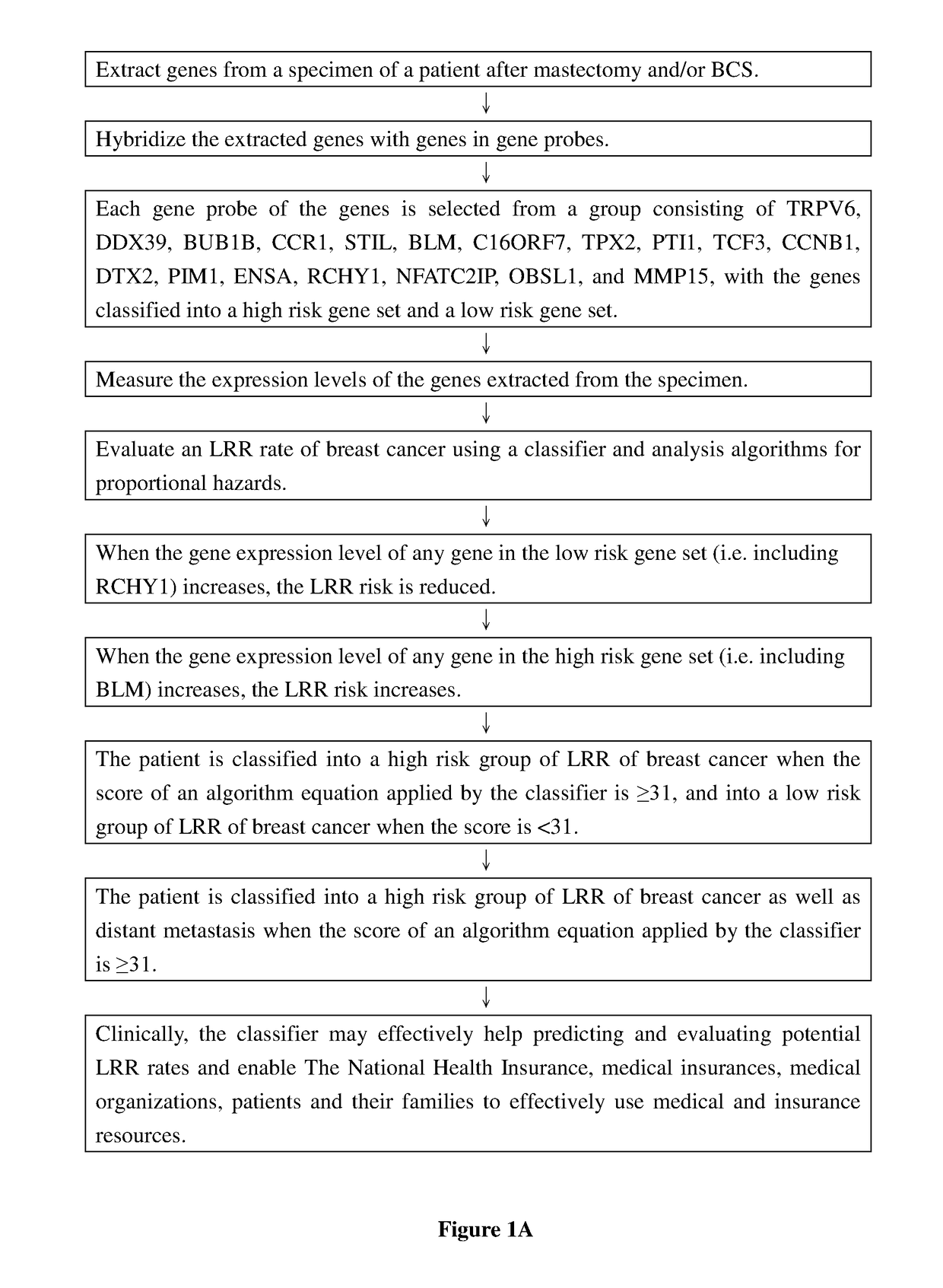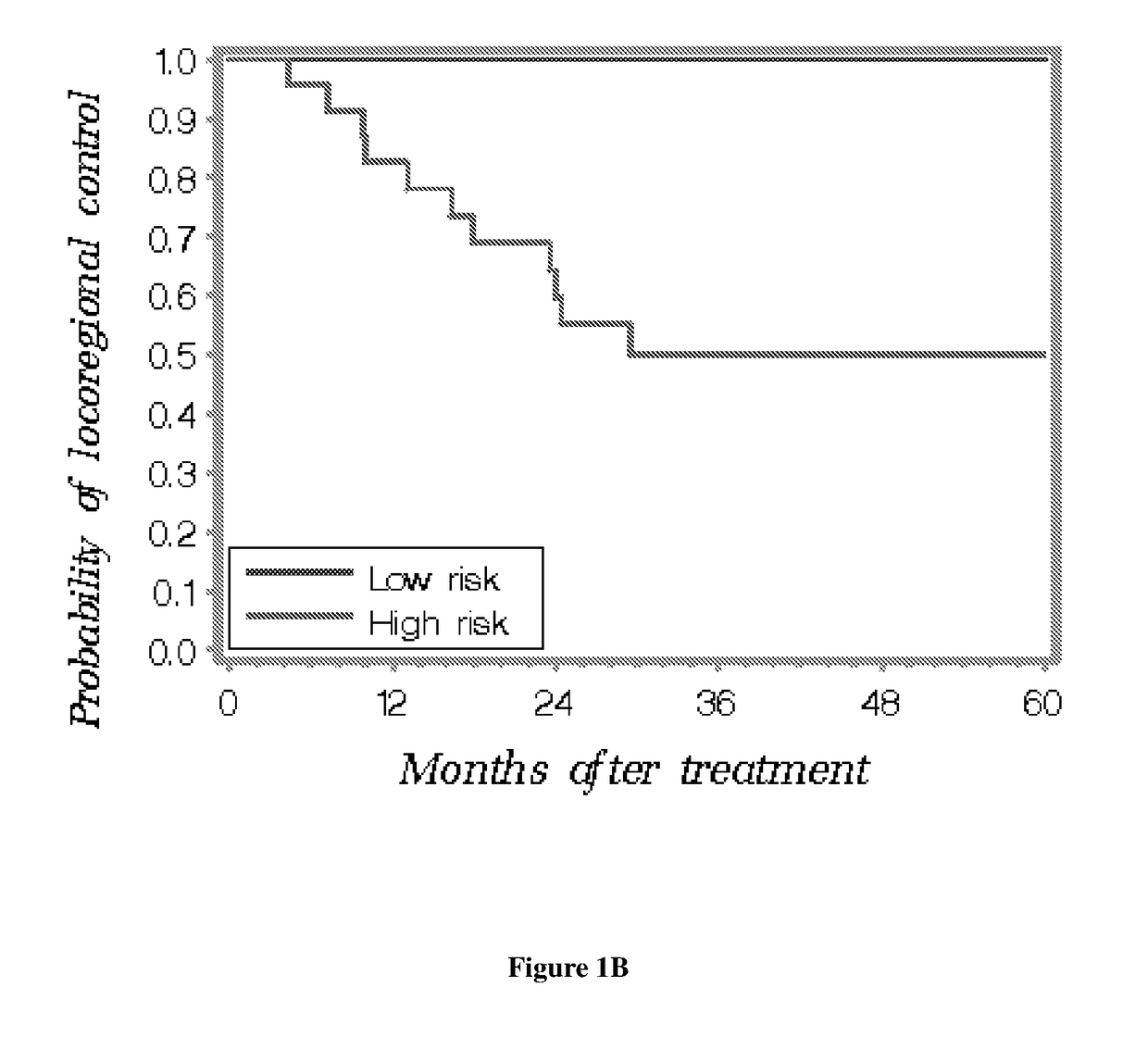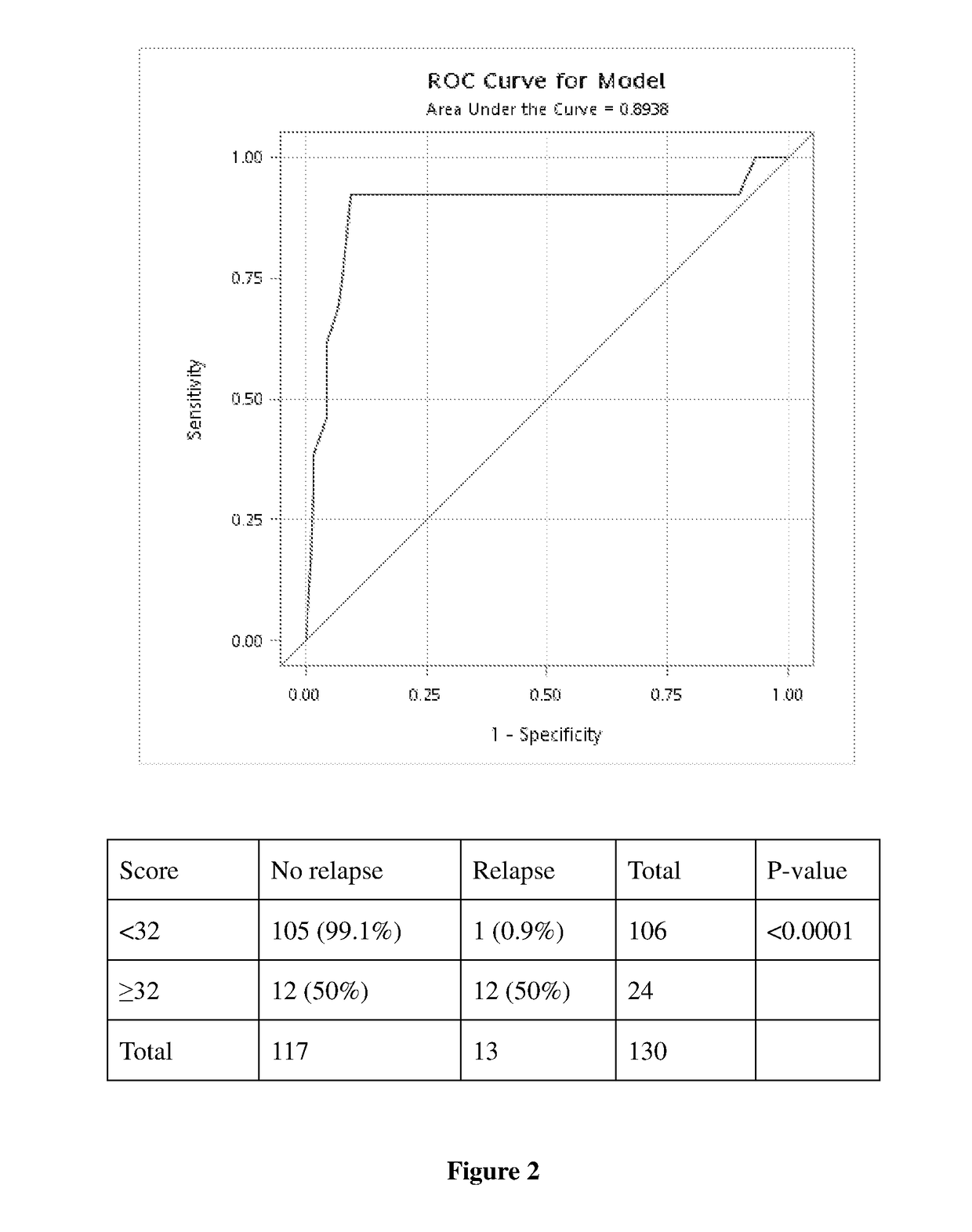Gene expression profiles and uses thereof in breast cancer
a gene expression and breast cancer technology, applied in the field of gene expression profiles, can solve the problems of inability to evaluate inability to predict locoregional recurrence, and inability to determine the likelihood of locoregional recurrence and/or distant, etc., to achieve the effect of reducing the burden and waste of medical costs, and being national
- Summary
- Abstract
- Description
- Claims
- Application Information
AI Technical Summary
Benefits of technology
Problems solved by technology
Method used
Image
Examples
example 1
DNA Microarray Analysis for Verifying Gene Expression Profiles Related to Locoregional Recurrence Rates After Mastectomy or Breast Conversing Surgery
[0170]Patients with invasive breast cancer were shortlisted in a medical research of tumor genes to develop a new taxonomy of breast cancer. A total of 217 patients with invasive breast cancer who underwent mastectomy or breast conserving surgery (BCS) between 2005 and 2012 and who had tissue specimens available for DNA (or gene) microarray were selected for this study. Of the 217 patients, 130 patients underwent mastectomy and 87 patients underwent BCS. All of the 217 patients gave their consent to have their primary tumor tissues undergo a study of DNA (or gene) microarray. Patients eligible for the study should have no post mastectomy radiotherapy (PMRT) (n=130) within a minimum of two years of follow-up. Patients who had accepted breast conserving surgery (BCS) (n=87) were analyzed separately to examine the performance of gene expre...
example 2
Gene Expression Profiles of LRR Rates Verified by Statistical Analysis
[0174]The 34 genes in the new platform of this invention were distributed in an 84 gene probe set, and 4 genes with unknown functions were unable to be identified. After univariate analysis, 18 out of the remaining 30 genes were found to be able to classify mastectomy patients into a low risk and a high risk group based on LRR rates. After multivariate analysis, patients may be classified into a low risk group and a high risk group. The 18 genes were used to classify BCS patients into a low risk group and a high risk group. Patients whose 18-gene scores were ≥31 were defined as at high risk and those whose scores were <31 were defined as at low risk.
Algorithms of Scoring Based on the 18 Genes (18-Gene Panel or Classifier)
[0175]Table 4 shows the univariate analysis and multivariate analysis of deriving or calculating scores based on each of the 18 genes using the proportional hazards model. When the hazard ratio is...
example 3
The Cox Proportional Hazards Model of Mastectomy Patients
[0188]Based on current clinical practice, methods used for evaluating whether N1 breast cancer patients require adjuvant radiotherapy would assign adjuvant radiotherapy to around 80% of them. However, radiotherapy reduces LRR rates for these patients, prevents secondary distant metastasis caused by relapses, and improves the overall survival rate.
[0189]The Cox proportional hazards model had been widely used to describe survival rates and related variables. Subsequently, the study examined whether the (18 gene panel) classifier was an independent prognostic factor that was related to LRR rate control. Traditional proportional hazards analysis had established clinical parameters that were related to proportional hazards analysis and quantitative evaluation, including the extent of LN metastasis and the ER status related to LRR. We employed clinical parameters and the classification system of the classifier to fully analyze the p...
PUM
| Property | Measurement | Unit |
|---|---|---|
| temperatures | aaaaa | aaaaa |
| temperatures | aaaaa | aaaaa |
| temperatures | aaaaa | aaaaa |
Abstract
Description
Claims
Application Information
 Login to View More
Login to View More - R&D
- Intellectual Property
- Life Sciences
- Materials
- Tech Scout
- Unparalleled Data Quality
- Higher Quality Content
- 60% Fewer Hallucinations
Browse by: Latest US Patents, China's latest patents, Technical Efficacy Thesaurus, Application Domain, Technology Topic, Popular Technical Reports.
© 2025 PatSnap. All rights reserved.Legal|Privacy policy|Modern Slavery Act Transparency Statement|Sitemap|About US| Contact US: help@patsnap.com



